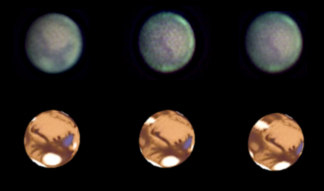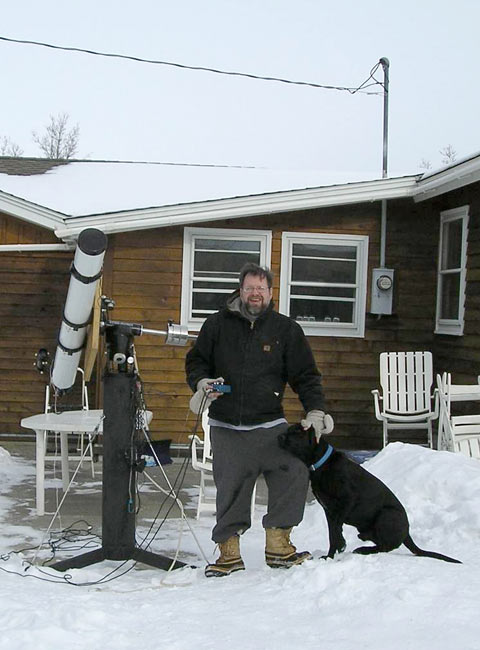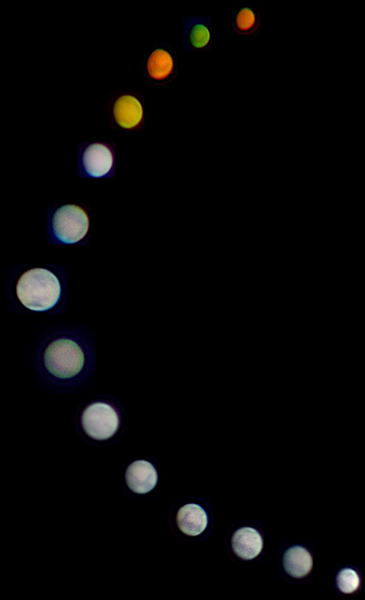

Last year in anticipation of the Mars opposition I started looking for a D&G Refractor. With the search magic of Astromart, which archives everything, I found a 5” F/12 D&G looking for a new home. The only drawback was that it was in Australia. The current owner hadn’t been able to find any buyers, partly due to customs concerns.
Well, that didn’t make any sense. D&G’s are made in the USA, so reimporting it should be duty free. So a deal was made, a slow boat shipper found (cheaper to ship to LA than Seattle), customs declarations signed, a niece-in-law to pick it up in LA and hand it over to UPS, and here it is in Bozeman, Montana (see picture at the end of this article). (Though I’ll never understand why I needed to pay a $50 forklift fee for a package that weighed 28 lbs.) The whole thing with shipping cost me $1000 US. (First light: the Lyra double doubles at 600 power!)
Onto the AP 800 Mount, and away to Mars we go. Attached are a series of images taken in January after I finally got my skill level up (Mars Preview images included for comparison). The refractor is a traditional crown and flint doublet, so chromatic aberration needs to be adjusted for, and is done by reducing saturation in K3CCD. It’s a fine balance between real color, false color, and no color at all, and the adjustment becomes difficult as Mars gets lower in the atmosphere. I’d love to try an Aries Chromacor or Baader’s Fringe Killer, but not on my budget.



So I’m very happy with my 5” D&G refractor, and I recommend the club find a used one too and put it on the 24” (D&G’s come up on Astromart about twice a year). There will often be seeing conditions that won’t justify using the 24”, especially on planets, where a smaller aperture will receive better results.
Technical details as follows:
5” F/12 D&G Refractor, at f/60 w. Astrosystems 5x Imagemate Philips Toucam, 5 frames per second 900 seconds, K3CCD Tools, Gain zero, Saturation and Gamma at 50%.
Processed in Registax 4, saved as TIFFS, converted to BMPs and sorted in IMERGE (all freeware, except for K3CCD Tools, which is shareware).
Next up, Saturn!! (And 100 double stars).

Here’s Brian, and his Astrodog Max, outside his Bozeman residence. Brian runs his scope from the house and has observed at -20 deg. F.
(Note: Toucams shut down at around -15 deg. F.)

As a follow-up to this newsletter article, here is a summary of the Mars opposition as observed by Brian Close in Bozeman. The top image is September 27th and the last bottom image is March 3rd. False color in the beginning is due to Brian’s slow learning curve on adjusting for his refractor’s color aberration. The images were separate bitmaps generated with Registax and assembled with I-Merge shareware.